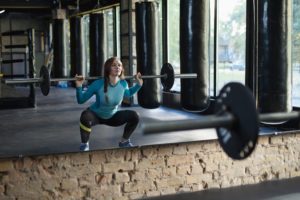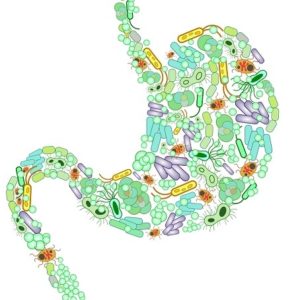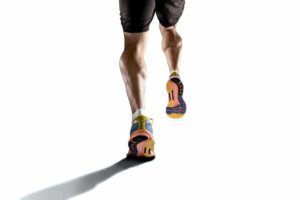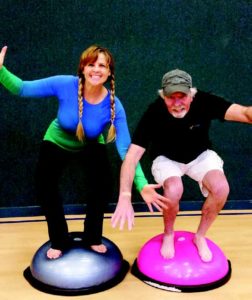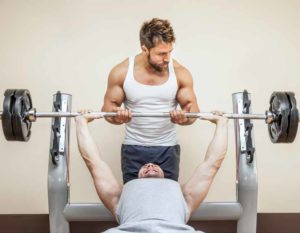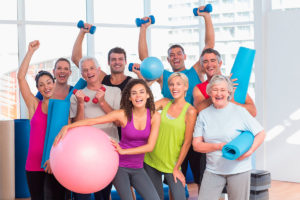Anatomy/Kinesiology
Why Proper Rib-Cage Position Is Important
Proper thoracic-cage functioning sets the groundwork for healthy movement.
How Fitness Professionals Can Avoid On-the-Job Injuries
Your body is your business; protect your investment and keep your returns flowing.
Give Yourself a Hand
The next time you pick up a dumbbell and hand it to your client, take a moment to celebrate the hard‐working hand. The hand is an anatomically refined dynamo that's often taken for granted until something as benign as a paper cut shifts the focus distally. Here are some interesting facts to grasp:
Comparing Periodization Strategies for Women
Study reviewed: Bartolomei, S., et al. 2015. Block vs. weekly undulating periodized resistance training programs in women. Journal of Strength and Conditioning Research, 29 (10), 2679—87.
If your clientele includes women looking to boost their muscular strength within a specific time frame, creating periodized weight–training programs for them is a great idea. The question is: How should you structure the program? Bartolomei and colleagues' study published in 2015 offers guidance on two possibilities.
The “New” Knee Ligament, Rediscovered
Hasn't the knee been thoroughly mapped? Perhaps. However, the following bold headline reverberated throughout the allied health community in 2013: "Doctors Identify a New Knee Ligament."
Really?
Preventing Golf Injuries
As a golfer, you want to stay injury-free to practice and compete regularly, which ultimately lets you hone your skills and elevate your performance.
To help avoid injury and boost level of play, you need to understand how two key muscle and soft-tissue systems—the posterior oblique system and the anterior oblique system—affect the golf swing.
The Big Payoff to Better Posture
When I was a kid, my dad was a stickler for posture. "Sit up straight," he'd say as I slouched over a plate of pasta. Other times, he'd try a tactile approach. I'd be standing in line at the market or sitting in the bleachers watching my oldest brother play baseball, and out of nowhere I'd feel two thumbs dig gently into my upper trapezius muscles while the remaining fingers of each hand gripped my shoulders and pulled them back. All these years later, I'm the one cuing people to mind their posture.
Does Exercise Benefit Digestive Health?
Gut microbiota has been a hot topic recently, and for good reason, as it is a key indicator of health. Gut microbiota contains trillions of micro-organisms, including at least 1,000 species of known bacteria, with more than 3 million genes (Gut Microbiota for Health 2016). There are many benefits to having a healthy gut, including but not limited to
A Minor Issue?
When you work with enough clients, eventually you notice all the variations in biomechanics and anatomy. You may or may not remember from your fitness professional certification studies that only about half of people have a psoas minor muscle. When it's there, it lies in front of the psoas major and originates from the sides of the 12th thoracic vertebra (T12), the first lumbar vertebra (L1) and the corresponding intervertebral disk (Farias et al. 2012).
Thriving After a Stroke
client: Gary | personal trainer: Tracy Markley, owner, Tracy's Personal Training | location: Florence, Oregon
Surviving a stroke. In May 2014, 65–yearold Gary had a stroke so severe his doctors were skeptical he'd survive it. Fortunately they were wrong, but he suffered so much damage that physical therapists were initially convinced he'd be wheelchair–bound for life.
What Is Plica Syndrome?
Clients sometimes experience general pain in the knee during or after an exercise session, and while it's not within your scope of practice to diagnose, a broad understanding of issues that affect this important joint can be helpful. Here's a snapshot of plica syndrome.
Plica is a fold of synovial tissue that's a "remnant" of embryologic development. The knee is initially divided into three compartments by membranes, which are then resorbed by the third or fourth month of fetal life (Scuderi et al. 1997).
Improving Health Behaviors
Laura DeFina, MD, FACP, is president and CEO of The Cooper Institute®, as well as its chief science officer. After practicing general internal medicine and geriatrics, she joined The Cooper Institute in 2009 to pursue her interests in prevention and research related to healthy aging. Since then, she has authored manuscripts on, among other topics, brain health, healthy aging, depression, cardiorespiratory fitness and injury in physically active women.
Skeletal Muscle Hypertrophy
Clients who want more muscularity need to face one of the most fundamental facts of skeletal muscle hypertrophy: Training to failure is crucial to building bigger muscles. Two original research studies reinforce this reality while offering meaningful new insights into hypertrophy training.
How to Help Golfers Improve Scores, Boost Performance, and Prevent Injuries
The key to understand the biomechanics of body rotation.
Aerobic Fitness May Preserve Brain’s Youthfulness
Physical fitness may do more than preserve a more youthful body; it may also impact the brain’s activity and function, preserving more youthful mental capabilities, according to findings published in NeuroImage (2015; doi: 10.1016/j.neuroimage.2015.09.062).
University of Tsukuba researchers in Japan found that fitter older men performed better mentally than less fit older men, by solving problems in the same way younger brains would do.
35 Ailments, One Prescription: MOVE!
It’s not exactly news that physical activity and exercise have powerful health benefits. Indeed, it’s an insight almost as old as recorded history.
In the fifth century BC, the famous Greek physician Hippocrates observed, “All parts of the body, if used in moderation and exercised in labors to which each is accustomed, become thereby healthy and well developed and age slowly; but if they are unused and left idle, they become liable to disease, defective in growth and age quickly” (Kokkinos
&
Myers 2010).
Safety for Pregnant Instructors
Many years ago, while I was pregnant with my second child, something happened that I hope no other group fitness instructor goes through. As I was driving to teach class,…
Help Students With “Tech Neck”
Have you noticed an increase in postural deviations among your students? In today’s society, “tech neck” is becoming more common—we all spend too much time looking down at our devices. This requires rounding the shoulders (rather than keeping them back and down, with chest open) and jutting the head forward. The position is becoming so habitual for a lot of people that it feels fixed and “natural” to them. Help participants become more aware of this uncomfortable trend and empower them to make better choices.
The Impact of Chronic Pain
Use a three-pronged approach to help frail participants move better, get
stronger and improve their balance.
Did you know that more than 45% of Americans experience pain on a
regular basis? Are you one of them? Unfortunately, people tend to fall
into bad habits as the body adapts to, and becomes familiar with,
persistent pain (Duhigg 2012).
Move It or Lose It
Have you ever wondered how long it takes to lose muscle strength during
a workout hiatus? Researchers in Denmark wondered, too, and what they discovered might shock you.



